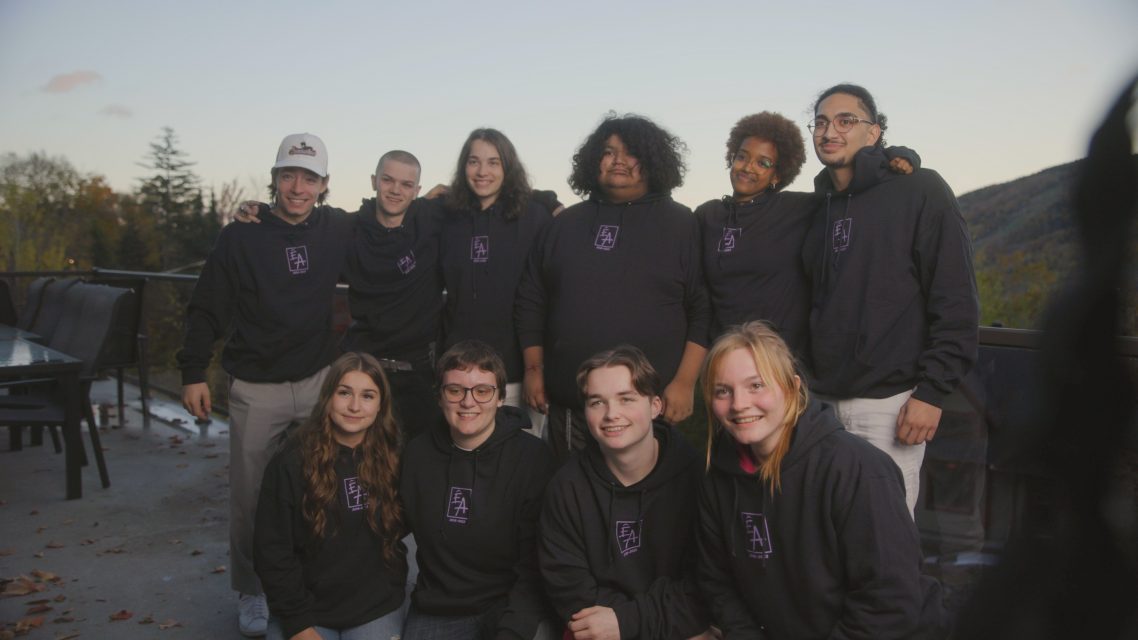Rethinking TV for teens
Gone are the days when teens came home from school and all watched the same thing on TV. Now it’s up to producers and broadcasters to focus their creative efforts on reaching kids where they are.
The facts are discouraging for children’s content creators: 21 percent of Canadians from age 2 to 17 never watch conventional television, while 91 percent consume content online, according to Media Technology Monitor (MTM).
Meanwhile, children’s TV channels are rapidly disappearing. In August, WildBrain announced it was cancelling four of its channels (Family Channel, Family Jr., WildBrainTV and the French-language Télémagino) after Rogers and Bell delisted them from their networks. Corus put an end to five channels (Nickelodeon, ABC Spark, Disney XD, Disney Junior, and La chaîne Disney) in September 2025, along with the Quebec dubbing of The Simpsons after 36 seasons. This, after Québecor/TVA gave Yoopa the boot in January 2024, and Bell Media said au revoir to Vrak in October 2023.
- Read more: Tough times for kids TV and long-form docs
But the producers and broadcasters we spoke with aren’t giving up yet. They believe there are still ways to share our homegrown stories with the next generation.
“Today’s smartphones are almost permanent extensions of our hands,” says Marysol Charbonneau, Télé-Québec’s director of youth and family content. “We, as adults, are as tethered to our smartphones as our kids, so we can’t blame them. If they can find a culture or subculture that interests them, I say, Bravo! What’s important is for us to find a way to be a part of it.”
Discoverability is the Secret Weapon
IP developer Epic Storyworlds promotes youth content in TV and video game productions. The company’s CEO and co-founder, Steve Couture, says the best way to reach young viewers is to go where they are, places like YouTube and Roblox.
- Read more: Roblox: Where Canadian creators come to play
“No matter what screen they’re using, we try to bring consumers into the ecosystems of our projects,” Couture says. “In this way, we not only generate discoverability, but enhance user engagement as well.”
Discoverability is the magic word; that element that lets consumers stumble upon content without even searching for it.
In this battle for discoverability, integration with digital platforms is an increasingly critical factor, and often starts as early as the writing stage.
“You have to start thinking about how to market the series as early as possible in the process,” says Ugo Média producer Patrick Bilodeau. Ugo specializes in digital series for teens and young adults. “It may sound a bit intimidating creatively, but while we never want to misrepresent the content or force anything that goes against the spirit of the project, the challenge is to make sure it’s seen.”
Bilodeau believes content should be created specifically for the platforms on which it’s consumed, and it has to meet the expectations of the platforms’ users. “Obviously, this can become quite demanding because you’re not going to put the same content on Instagram, TikTok and Facebook,” he says.
Actors as Influencers
The choice of actors can also play a key role in a series’ discoverability. A good example is Ugo Média’s Détox, which targets 14- to 18-year-olds and was broadcast on TV5 Unis in 2022 and 2024.
“While casting was based, first and foremost, on acting skills and chemistry, many of the actors also had impressive followings on social media, so we knew that would help us introduce the series to young viewers,” says Bilodeau.
The strategy was largely deployed on TikTok, where teens could interact with the actors behind the characters.
The result? “Détox racked up over half-a-million views,” says Bilodeau. “Of course, you still have the challenge of getting the young fans off social media and over to where the series can be found.”
K-pop Tops the Charts
The producers of Gangnam Project — a K-pop series aimed at 8- to 12-year-olds and broadcast on CBC Gem — also turned to TikTok and YouTube.

The series highlights Korean pop music, a genre that’s huge with young people, and was produced by Aircraft Pictures in collaboration with Pillango Productions.
Aircraft co-president Anthony Leo says the series’ music is entirely original, written by August Rigo, a successful composer for real K-pop groups. The production team also created music videos for some songs as exclusive content for social media.
“As we were getting ready to release the second season there was a real rise in the idea of micro dramas,” explains Leo. “So our social media campaign kind of leaned into that and used clips from the show to tell a bit of a drama of their own on social media in the hopes that people would want to see the full story and tune in to CBC or CBC Gem.”
“You have to be prepared to switch your plan,” he adds. “In the six-to-eight months it might take to actually produce the series, things can change a lot.”
Exclusively on TikTok
Télé-Québec is taking it to the next level with the series La mascotte du chaos, produced by +Un. Episodes, which last between one and three minutes, will be broadcast exclusively on Télé-Québec’s TikTok account.
While the story is divided into episodes, they can be viewed in any order. The goal is to guess who’s hiding inside the mascot’s costume and responsible for some mischief.
How do innovations like these change the way stories are told?
“I certainly can’t open with a slow pan on a landscape like they do in movies or on TV,” says Charbonneau. “I need to stimulate emotion in a young viewer immediately, so they’ll want to know how we got here.”
The Future of Long-Form Content
Patrick Bilodeau wonders about the future of long-form content.
“Short-form content can be habit-forming,” he says. “We’re seeing more and more of a dual-screen phenomenon, where longer-format series and feature films are being watched in the background. International platforms are asking us to take this into account at the writing stage.”
Charbonneau begs to differ, reassuring that long-form content is not dead. As an example she cites La nuit devant nous. The fiction series directed by Adib Alkhalidey will launch as part of Télé-Québec’s holiday programming, Ciné-Cadeau, as 13 30-minute episodes.
And last year’s documentary series Être ado followed 10 teenagers from across Quebec over five years. Twelve 60-minute episodes that were broadcast on Télé-Québec were a big hit with teens and their parents, proving audiences of all ages are still drawn to longer content.

“Having just one format isn’t really serving the interests of the general public,” Charbonneau says. “When it comes to teens, we have to react quickly. When there’s something new, we try it, because we can’t wait for the trend to be fully established.”